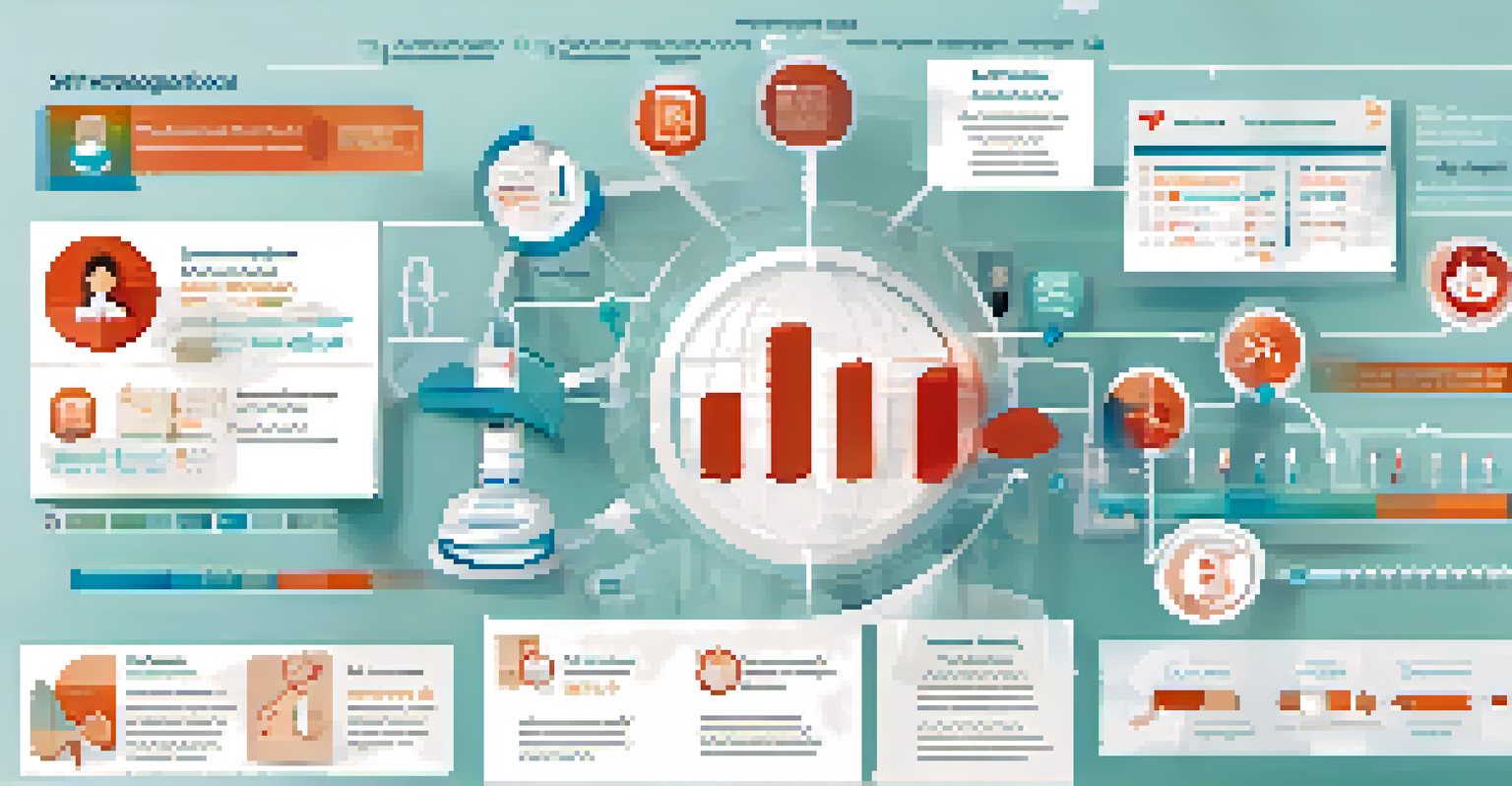Voice Recognition Technology: Transforming Patient Documentation

Understanding Voice Recognition Technology in Healthcare
Voice recognition technology allows devices to interpret and process human speech. In healthcare, this means that clinicians can dictate notes and reports instead of typing them. This technology leverages advanced algorithms to convert spoken words into written text, making it a valuable tool in busy medical environments.
Technology will never replace great teachers, but technology in the hands of great teachers is transformational.
The software is designed to learn from user patterns, improving accuracy over time. This adaptability is crucial in healthcare, where terminology can be complex and specialized. By becoming more attuned to a clinician's voice and vocabulary, the technology ensures that documentation is as precise as possible.
As the healthcare industry embraces digital solutions, voice recognition technology stands out for its potential to streamline workflows. It not only saves time but also reduces the administrative burden on healthcare professionals, allowing them to focus more on patient care.
Benefits of Voice Recognition for Patient Documentation
One of the most significant advantages of voice recognition technology is its efficiency. Clinicians can document patient interactions in real-time, which leads to more accurate and comprehensive records. This immediacy can greatly enhance patient safety and care continuity.

Additionally, the technology can reduce the risk of errors commonly associated with manual data entry. When clinicians dictate notes, they are less likely to misinterpret or miswrite critical patient information. This accuracy can be vital in ensuring patients receive the right treatments.
Voice Recognition Enhances Efficiency
Voice recognition technology allows clinicians to document patient interactions in real-time, improving accuracy and patient safety.
Moreover, by minimizing the time spent on documentation, healthcare providers can increase their patient load. This not only improves productivity but also helps to enhance the overall patient experience, as more time can be dedicated to direct patient interactions.
Challenges in Implementing Voice Recognition Technology
Despite its many benefits, implementing voice recognition technology is not without challenges. One major hurdle is the initial setup and training phase, which can be time-consuming for healthcare staff. Familiarizing themselves with the software and its nuances requires a commitment of time and effort.
The goal is to turn data into information, and information into insight.
Furthermore, not all voice recognition systems are created equal. Some may struggle with medical jargon or the diverse accents of healthcare professionals, which can lead to inaccuracies. This highlights the importance of selecting a system that is specifically designed for the medical field.
Lastly, privacy concerns can arise when sensitive patient information is being dictated. Ensuring that the technology is compliant with regulations like HIPAA (Health Insurance Portability and Accountability Act) is crucial to protect patient confidentiality and maintain trust.
The Role of AI in Enhancing Voice Recognition
Artificial intelligence (AI) plays a significant role in the evolution of voice recognition technology. By utilizing machine learning, AI algorithms can continuously improve their understanding of language and context. This results in better accuracy and efficiency in transcribing medical conversations.
AI can also help in context-sensitive understanding, differentiating between similar-sounding terms based on the medical context. For instance, it can accurately differentiate between 'prescription' and 'description' depending on the patient's case being discussed.
AI Boosts Voice Recognition Accuracy
Artificial intelligence enhances voice recognition systems by continuously learning language and context, resulting in better transcription of medical conversations.
As AI technology advances, we can expect even more powerful voice recognition systems in healthcare. These systems will not only understand and transcribe speech but may also offer insights and suggestions based on the information being documented.
Integrating Voice Recognition with Electronic Health Records
For voice recognition technology to reach its full potential, it must seamlessly integrate with electronic health records (EHR). This integration allows for a smooth flow of information, where dictated notes are instantly captured and organized within a patient's digital file. Such connectivity enhances the usability of both systems.
When voice recognition is combined with EHR, healthcare professionals can quickly access patient histories, lab results, and other critical information while documenting visits. This capability not only saves time but also enriches the quality of care provided, as clinicians can make informed decisions based on comprehensive data.
Moreover, this integration supports improved collaboration among healthcare teams. With real-time updates and shared access to patient documentation, all team members can stay informed, leading to better coordinated care.
User Training and Acceptance of Voice Recognition Technology
Training is essential for successful adoption of voice recognition technology in healthcare settings. Providing comprehensive training ensures that clinicians feel comfortable and confident using the system. This can significantly enhance user acceptance and minimize resistance to change.
Creating a supportive environment where users can share experiences and tips can further promote the effective use of this technology. Peer support can make the transition smoother and help address any technical challenges that may arise.
Integration with EHR is Essential
Seamless integration of voice recognition technology with electronic health records enriches the quality of care by providing instant access to patient information.
Ultimately, the more familiar healthcare providers become with voice recognition tools, the more they will appreciate their benefits. This acceptance will lead to improved documentation practices and, consequently, better patient outcomes.
The Future of Voice Recognition in Healthcare Documentation
The future of voice recognition technology in healthcare looks promising, with ongoing advancements anticipated in both accuracy and functionality. As technology continues to evolve, we can expect more intuitive systems that require less training and are easier to use. This will likely lead to wider adoption across various healthcare settings.
Additionally, the integration of voice recognition with other emerging technologies, such as telemedicine and wearable devices, will create a more holistic approach to patient care. Imagine a scenario where a clinician can take notes during a telehealth session, and those notes are instantly added to the patient's EHR.

As these technologies converge, they will not only enhance documentation but also elevate the overall healthcare experience for both providers and patients. The goal will always be to improve the quality of care, and voice recognition is poised to be a key player in achieving that vision.